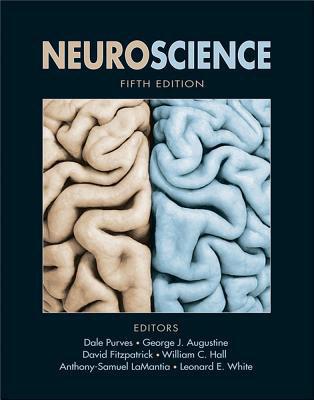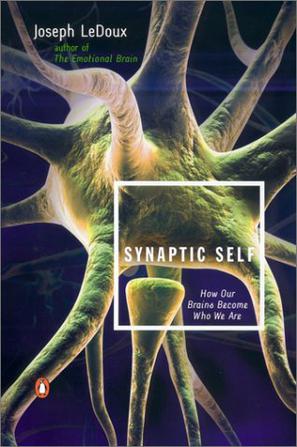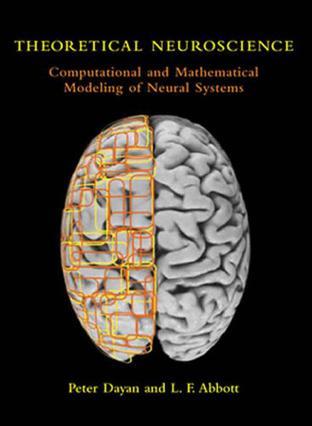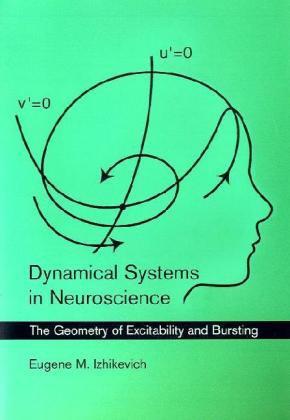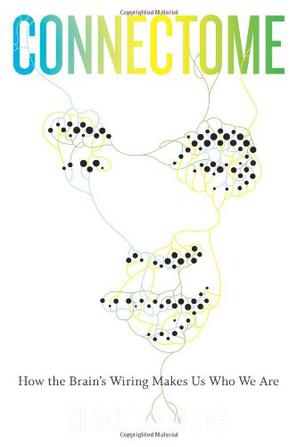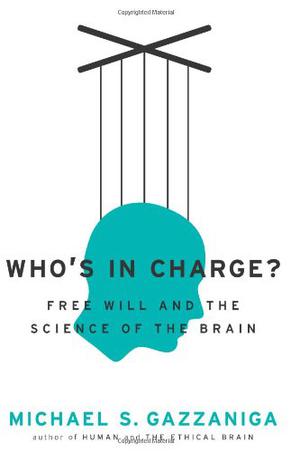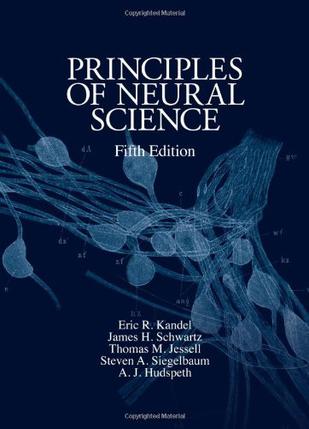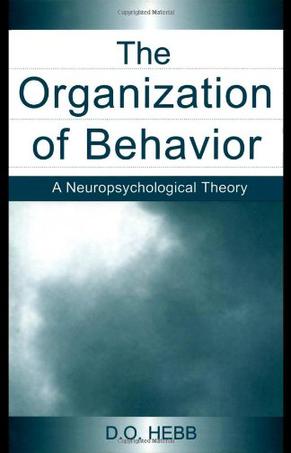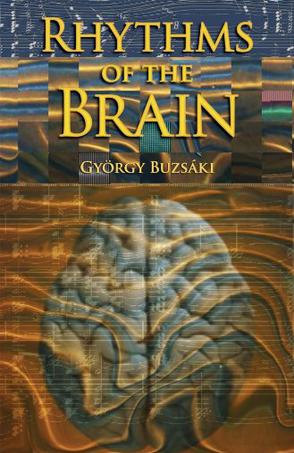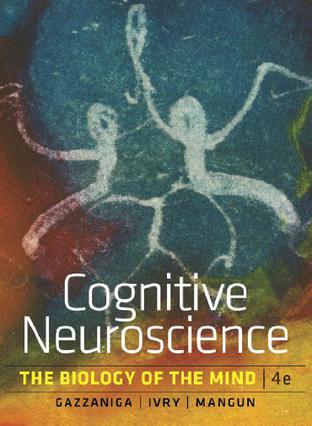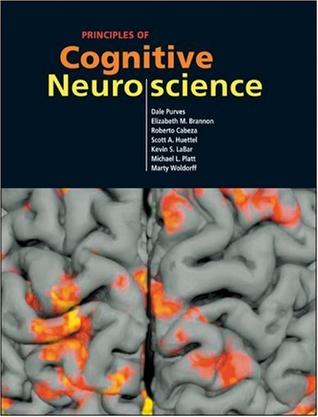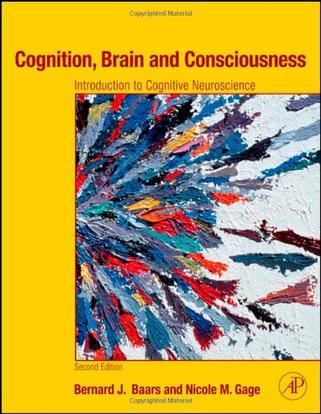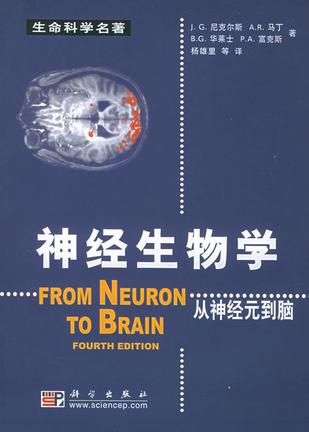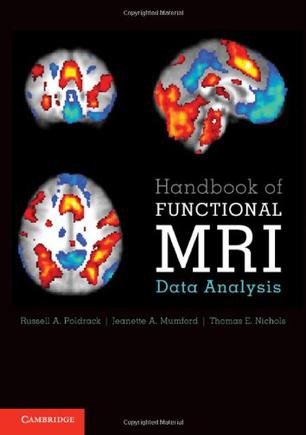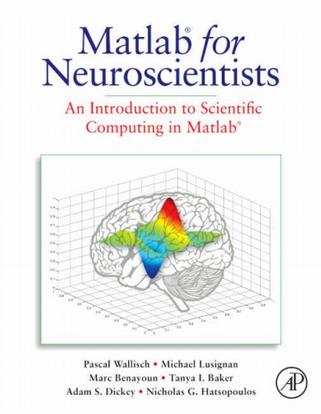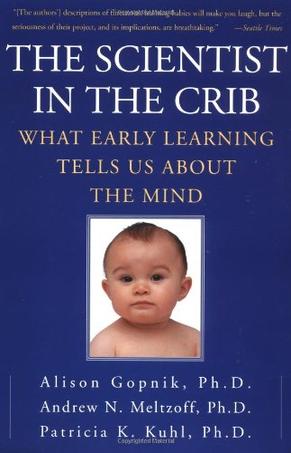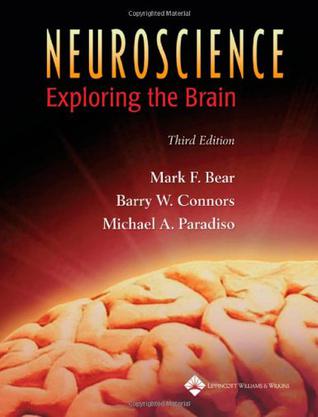欢迎来到相识电子书!
标签:Neuroscience
-
Neuroscience
Review Neuroscience is a remarkably well-organized and well-written text. It is highly accessible and easy to follow, which is impressive given the amount of detail and depth it provides. Each step of the way, explanations of complex concepts are accompanied by easy-to-follow graphics that on the one hand enhance deep understanding, and, on the other, make it easy to even just browse or skim. The book does an excellent job of bridging between molecular and molar levels of analysis, between basic and clinical science, and between the big picture and discrete detail. In other words, it keeps you grounded and allows you to understand how basic processes relate to cognition, emotion, and behavior, as well as to various forms of dysfunction. ... I am definitely keeping a copy of Neuroscience on my desk, along with Lezak et al., Strauss et al., and all the other classics. --Yana Suchy, JINS As is the tradition with this book, current neuroanatomical and neurophysiological concepts are explained in detail and fully illustrated. The addition of current concepts on neuroplasticity and behavior, as well as the web resources, significantly enrich this edition. This is a worthy and affordable book for neuroscience students. ... An excellent contribution to the study of neuroscience, deserving of its place in neurology, neurosurgery, and neurosciences libraries. --Celso Agner, Doody's Book Review -
Synaptic Self
Amazon.com A middle-aged neuroscientist walking down Bourbon Street spots a T-shirt that reads, "I don't know, so maybe I'm not." This stimulus zooms from eyes to brain, neuron by neuron, via tiny junctions called synapses. The results? An immediate chuckle and (sometime later) a groundbreaking book titled The Synaptic Self. To Joseph LeDoux, the simple question, "What makes us who we are?" represents the driving force behind his 20-plus years of research into the cognitive, emotional, and motivational functions of the brain. LeDoux believes the answer rests in the synapses, key players in the brain's intricately designed communication system. In other words, the pathways by which a person's "hardwired" responses (nature) mesh with his or her unique life experiences (nurture) determine that person's individuality. Here, LeDoux nimbly compresses centuries of philosophy, psychology, and biology into an amazingly clear picture of humanity's journey toward understanding the self. Equally readable is his comprehensive science lesson, where detailed circuit speak reads like an absorbing--yet often humorous--mystery novel. Skillfully presenting research studies and findings alongside their various implications, LeDoux makes a solid case for accepting a synaptic explanation of existence and provides to the reader generous helpings of knowledge, amusement, and awe along the way. --Liane Thomas --This text refers to an out of print or unavailable edition of this title. From Publishers Weekly Despite ongoing debate about the root cause of psychological disorders, most agree that the development of the self is central to the distinction between normality and psychopathology. Yet neuroscientists have been slow to probe the biological basis for our sense of self, focusing instead on states of consciousness. LeDoux (The Emotional Brain), professor at New York University's Center for Neural Sciences, has come up with a theory: it's the neural pathways the synaptic relationships in our brains that make us who we are. Starting with a description of basic neural anatomy (including how neurons communicate, the brain's embryological development and some of the key neural pathways), LeDoux reviews experiments and research, arguing that the brain's synaptic connections provide the biological base for memory, which makes possible the sense of continuity and permanence fundamental to a "normal" conception of self. Writing for a general audience, he succeeds in making his subject accessible to the dedicated nonspecialist. He offers absorbing descriptions of some of the most fascinating case studies in his field, provides insight into the shortcomings of psychopharmacology and suggests new directions for research on the biology of mental illness. While some may disagree with LeDoux's conclusion that "the brain makes the self" through its synapses, he makes an important contribution to the literature on the relationship between these two entities. Agents, Katinka Matson and John Brockman. (On-sale: Jan. 14) Copyright 2001 Cahners Business Information, Inc. --This text refers to an out of print or unavailable edition of this title. -
Theoretical Neuroscience
Theoretical neuroscience provides a quantitative basis for describing what nervous systems do, determining how they function, and uncovering the general principles by which they operate. This text introduces the basic mathematical and computational methods of theoretical neuroscience and presents applications in a variety of areas including vision, sensory-motor integration, development, learning, and memory.The book is divided into three parts. Part I discusses the relationship between sensory stimuli and neural responses, focusing on the representation of information by the spiking activity of neurons. Part II discusses the modeling of neurons and neural circuits on the basis of cellular and synaptic biophysics. Part III analyzes the role of plasticity in development and learning. An appendix covers the mathematical methods used, and exercises are available on the book's Web site. -
Theoretical Neuroscience
Theoretical neuroscience provides a quantitative basis for describing what nervous systems do, determining how they function, and uncovering the general principles by which they operate. This text introduces the basic mathematical and computational methods of theoretical neuroscience and presents applications in a variety of areas including vision, sensory-motor integration, development, learning, and memory.The book is divided into three parts. Part I discusses the relationship between sensory stimuli and neural responses, focusing on the representation of information by the spiking activity of neurons. Part II discusses the modeling of neurons and neural circuits on the basis of cellular and synaptic biophysics. Part III analyzes the role of plasticity in development and learning. An appendix covers the mathematical methods used, and exercises are available on the book's Web site. -
Dynamical Systems in Neuroscience
In order to model neuronal behavior or to interpret the results of modeling studies, neuroscientists must call upon methods of nonlinear dynamics. This book offers an introduction to nonlinear dynamical systems theory for researchers and graduate students in neuroscience. It also provides an overview of neuroscience for mathematicians who want to learn the basic facts of electrophysiology.Dynamical Systems in Neuroscience presents a systematic study of the relationship of electrophysiology, nonlinear dynamics, and computational properties of neurons. It emphasizes that information processing in the brain depends not only on the electrophysiological properties of neurons but also on their dynamical properties.The book introduces dynamical systems, starting with one- and two-dimensional Hodgkin-Huxley-type models and continuing to a description of bursting systems. Each chapter proceeds from the simple to the complex, and provides sample problems at the end. The book explains all necessary mathematical concepts using geometrical intuition; it includes many figures and few equations, making it especially suitable for non-mathematicians. Each concept is presented in terms of both neuroscience and mathematics, providing a link between the two disciplines.Nonlinear dynamical systems theory is at the core of computational neuroscience research, but it is not a standard part of the graduate neuroscience curriculum--or taught by math or physics department in a way that is suitable for students of biology. This book offers neuroscience students and researchers a comprehensive account of concepts and methods increasingly used in computational neuroscience.An additional chapter on synchronization, with more advanced material, can be found at the author's website, www.izhikevich.com. -
Principles of Neural Science
This title now updated: the definitive neuroscience resource-from Eric R. Kandel, MD (winner of the Nobel Prize in 2000); James H. Schwartz, MD, PhD; Thomas M. Jessell, PhD; Steven A. Siegelbaum, PhD; and A. J. Hudspeth, PhD 900 full-color illustrations. Deciphering the link between the human brain and behavior has always been one of the most intriguing - and often challenging-aspects of scientific endeavor. The sequencing of the human genome, and advances in molecular biology, have illuminated the pathogenesis of many neurological diseases and have propelled our knowledge of how the brain controls behavior. To grasp the wider implications of these developments and gain a fundamental understanding of this dynamic, fast-moving field, Principles of Neuroscience stands alone as the most authoritative and indispensible resource of its kind. In this classic text, prominent researchers in the field expertly survey the entire spectrum of neural science, giving an up-to-date, unparalleled view of the discipline for anyone who studies brain and mind. Here, in one remarkable volume, is the current state of neural science knowledge - ranging from molecules and cells, to anatomic structures and systems, to the senses and cognitive functions-all supported by more than 900 precise, full-color illustrations. In addition to clarifying complex topics, the book also benefits from a cohesive organization, beginning with an insightful overview of the interrelationships between the brain, nervous system, genes, and behavior. Principles of Neural Science then proceeds with an in-depth examination of the molecular and cellular biology of nerve cells, synaptic transmission, and the neural basis of cognition. The remaining sections illuminate how cells, molecules, and systems give us sight, hearing, touch, movement, thought, learning, memories, and emotions. The new fifth edition of Principles of Neural Science is thoroughly updated to reflect the tremendous amount of research, and the very latest clinical perspectives, that have significantly transformed the field within the last decade. Ultimately, Principles of Neural Science affirms that all behavior is an expression of neural activity, and that the future of clinical neurology and psychiatry hinges on the progress of neural science. Far exceeding the scope and scholarship of similar texts, this unmatched guide offers a commanding, scientifically rigorous perspective on the molecular mechanisms of neural function and disease-one that you'll continually rely on to advance your comprehension of brain, mind, and behavior. Features: the cornerstone reference in the field of neuroscience that explains how the nerves, brain, and mind function; clear emphasis on how behavior can be examined through the electrical activity of both individual neurons and systems of nerve cells; current focus on molecular biology as a tool for probing the pathogenesis of many neurological diseases, including muscular dystrophy, Huntington disease, and certain forms of Alzheimer's disease; more than 900 engaging full-color illustrations - including line drawings, radiographs, micrographs, and medical photographs clarify often-complex neuroscience concepts; outstanding section on the development and emergence of behavior, including important coverage of brain damage repair, the sexual differentiation of the nervous system, and the aging brain. Features: more detailed discussions of cognitive and behavioral functions, and an expanded review of cognitive processes; a focus on the increasing importance of computational neural science, which enhances our ability to record the brain's electrical activity and study cognitive processes more directly; and chapter-opening. Key concepts: provides a convenient, study-enhancing introduction to the material covered in each chapter; selected readings and full reference citations at the close of each chapter facilitate further study and research; and helpful appendices highlight basic circuit theory; the neurological examination of the patient; circulation of the brain; the blood-brain barrier, choroid plexus, and cerebrospinal fluid; neural networks; and theoretical approaches to neuroscience. -
The Organization of Behavior
Since its publication in 1949, D.O. Hebb's, The Organization of Behavior has been one of the most influential books in the fields of psychology and neuroscience. However, the original edition has been unavailable since 1966, ensuring that Hebb's comment that a classic normally means "cited but not read" is true in his case. This new edition rectifies a long-standing problem for behavioral neuroscientists--the inability to obtain one of the most cited publications in the field. The Organization of Behavior played a significant part in stimulating the investigation of the neural foundations of behavior and continues to be inspiring because it provides a general framework for relating behavior to synaptic organization through the dynamics of neural networks. D.O. Hebb was also the first to examine the mechanisms by which environment and experience can influence brain structure and function, and his ideas formed the basis for work on enriched environments as stimulants for behavioral development. References to Hebb, the Hebbian cell assembly, the Hebb synapse, and the Hebb rule increase each year. These forceful ideas of 1949 are now applied in engineering, robotics, and computer science, as well as neurophysiology, neuroscience, and psychology--a tribute to Hebb's foresight in developing a foundational neuropsychological theory of the organization of behavior. -
Rhythms of the Brain
Studies of mechanisms in the brain that allow complicated things to happen in a coordinated fashion have produced some of the most spectacular discoveries in neuroscience. This book provides eloquent support for the idea that spontaneous neuron activity, far from being mere noise, is actually the source of our cognitive abilities. It takes a fresh look at the co-evolution of structure and function in the mammalian brain, illustrating how self-emerged oscillatory timing is the brains fundamental organiser of neuronal information. The small world-like connectivity of the cerebral cortex allows for global computation on multiple spatial and temporal scales. The perpetual interactions among the multiple network oscillators keep cortical systems in a highly sensitive metastable state and provide energy-efficient synchronising mechanisms via weak links. In a sequence of cycles, Gyorgy Buzsaki guides the reader from the physics of oscillations through neuronal assembly organisation to complex cognitive processing and memory storage. His clear, fluid writing accessible to any reader with some scientific knowledge is supplemented by extensive footnotes and references that make it just as gratifying and instructive a read for the specialist. The coherent view of a single author who has been at the forefront of research in this exciting field, this volume is essential reading for anyone interested in our rapidly evolving understanding of the brain. -
Principles of Cognitive Neuroscience
This book, written by seven leaders in the field, is intended to inform readers at all levels about the growing canon of cognitive neuroscience, and to make clear the many challenges that remain to be solved by the next generation. Chapters begin with a brief introduction and end with a summary; in addition to the narrative text, richly illustrated in full color, each chapter includes boxed material on topics of special interest. Extensive references to useful reviews, important original papers, and books are provided. In addition to an appendix that covers the essentials of neural signaling and an extensive glossary of key terms, each copy comes with Sylvius 4, which includes an interactive tutorial on human neuroanatomy and a digital atlas of human brain structure. -
Cognition, Brain, and Consciousness, Second Edition
This is the fully revised and updated second edition of the very sucessful introductory textbook on cognitive neuroscience. Written by two leading experts in the field, thisbook takes a unique thematic approach to introduce concepts of cognitive neurosciences, guiding students along a clear path to understand the latest findings whether or not they have a background in neuroscience. New to this edition are Frontiers in Cognitive Neuroscience text boxes; each one focuses on a leading researcher and their topic of expertise. There is a new chapter on Genes and Molecules of Cognition, and all other chapters have been thoroughly revised, based on the most recent discoveries. New edition of a very successful textbook Completely revisedto reflect new advances, and feedback from adopters and students Includes a new chapter on Genes and Molecules of Cognition Student Solutions available at http://www.baars-gage.com/ For Teachers: Rapid adoption and course preparation: A wide array of instructor support materials are available online including PowerPoint lecture slides, a test bank with answers, and eFlashcords on key concepts for each chapter. A textbook with an easy-to-understand thematic approach: in a way that is clear for students from a variety of academic backgrounds, the text introduces concepts such as working memory, selective attention, and social cognition. A step-by-step guide for introducing students to brain anatomy: color graphics have been carefully selected to illustrate all points and the research explained. Beautifully clear artist's drawings are used to 'build a brain' from top to bottom, simplifying the layout of the brain. For students: An easy-to-read, complete introduction to mind-brain science: all chapters begin from mind-brain functions and build a coherent picture of their brain basis. A single, widely accepted functional framework is used to capture the major phenomena. Learning Aids include a student support site with study guides and exercises, a new Mini-Atlas of the Brain and a full Glossary of technical terms and their definitions. Richly illustrated with hundreds of carefully selected color graphics to enhance understanding. -
神经生物学
本书是神经生物学领域内的一本世界级名著,本版为跨世纪的第4版。内容涵盖了神经生物学的许多重要方面,系统介绍了神经生物学的基本概念、神经系统的功能及其细胞和分子机制。作者应用许多生动的实例,通过严密的逻辑组织起来,以展示神经生物学的发展脉络。结合300余幅制作精良的插图,为读者提供了这门重要学科的一幅有内在联系的全景图。全书把神经生物学的基本原理和近年进展紧密结合起来,文笔流畅,深入浅出,对相关领域的学生、教授和研究人员均是一本有用的参考书。 -
Handbook of Functional MRI Data Analysis
Functional magnetic resonance imaging (fMRI) has become the most popular method for imaging brain function. Handbook of Functional MRI Data Analysis provides a comprehensive and practical introduction to the methods used for fMRI data analysis. Using minimal jargon, this book explains the concepts behind processing fMRI data, focusing on the techniques that are most commonly used in the field. This book provides background about the methods employed by common data analysis packages including FSL, SPM and AFNI. Some of the newest cutting-edge techniques, including pattern classification analysis, connectivity modeling and resting state network analysis, are also discussed. Readers of this book, whether newcomers to the field or experienced researchers, will obtain a deep and effective knowledge of how to employ fMRI analysis to ask scientific questions and become more sophisticated users of fMRI analysis software. -
Matlab for Neuroscientists
Matlab is the accepted standard for scientific computing, used globally in virtually all Neuroscience and Cognitive Psychology laboratories. For instance, SPM, the most used software for the analysis and manipulation of fMRI images in research and clinical practice is fully programmed in matlab, and its use of the possibility to allow for sophisticated software modules to be freely added to the software has established it as the by far dominant software in the field. Many universities now offer, or are beginning to offer matlab introductory courses in their neuroscience and psychology programs. Nevertheless, so far there hasn't been a textbook specific to this market, and the use of the plethora of existing engineering focused Matlab textbooks is notoriously difficult for teaching the package in those environments. This is the first comprehensive teaching resource and textbook for the teaching of Matlab in the Neurosciences and in Psychology. Matlab is unique in that it can be used to learn the entire empirical and experimental process, including stimulus generation, experimental control, data collection, data analysis and modeling. Thus a wide variety of computational problems can be addressed in a single programming environment. The idea is to empower advanced undergraduates and beginning graduate students by allowing them to design and implement their own analytical tools. As students advance in their research careers, they will have achieved the fluency required to understand and adapt more specialized tools as opposed to treating them as "black boxes". Virtually all computational approaches in the book are covered by using genuine experimental data that are either collected as part of the lab project or were collected in the labs of the authors, providing the casual student with the look and feel of real data. In some rare cases, published data from classical papers are used to illustrate important concepts, giving students a computational understanding of critically important research. The ability to effectively use computers in research is necessary in an academic environment that is increasingly focused on quantitative issues. Matlab represents an ideal language of scientific computing. It is based on powerful linear algebra structures which lend themselves to empirical problems on the one hand, while at the same time allowing the student to make rapid problem-oriented progress (particularly in terms of visualization of data points) without having to lose focus by worrying too much about memory allocation and other "plumbing" minutiae as would be required in other, more low-level programming languages such as C or C++. Currently, there are several books that provide introductions to Matlab that are either too generic and fundamental or too irrelevant for neuroscientists and cognitive psychologists who typically face a very circumscribed range of problems in data collection, data analysis and signal processing. Some non-book tutorials and primers that are in use in the community are typically out of date. Matlab versions are usually not backwards compatible. Many commands and functions used in older tutorials and primers, such as "flops" won't work in current versions of Matlab, necessitating a book that is timely and up-to-date. The complete lack of a relevant resource in this area, combined with a clearly felt need for such a text provided the primary and initial impetus for this project. The authors provide such a dearly needed resource adapting and pooling materials that developed for and used in highly rated courses involving the use of Matlab in Neuroscience at the University of Chicago. Two co-authors (PW and NH) have presented their respective work on teaching Matlab at national meetings and two of the co-authors (PW and MB) were awarded the coveted University of Chicago's Booth Prize for excellence in teaching these courses. (http://chronicle.uchicago.edu/070524/boothprize.shtml ). * The first comprehensive textbook on Matlab with a focus for its application in Neuroscience * Problem based educational approach with many examples from neuroscience and cognitive psychology using real data * Authors are award winning educators with strong teaching experience * Instructor's Website with figurebank, additional problems and examples, solutions, etc -
Matlab for Neuroscientists
Matlab is the accepted standard for scientific computing, used globally in virtually all Neuroscience and Cognitive Psychology laboratories. For instance, SPM, the most used software for the analysis and manipulation of fMRI images in research and clinical practice is fully programmed in matlab, and its use of the possibility to allow for sophisticated software modules to be freely added to the software has established it as the by far dominant software in the field. Many universities now offer, or are beginning to offer matlab introductory courses in their neuroscience and psychology programs. Nevertheless, so far there hasn't been a textbook specific to this market, and the use of the plethora of existing engineering focused Matlab textbooks is notoriously difficult for teaching the package in those environments. This is the first comprehensive teaching resource and textbook for the teaching of Matlab in the Neurosciences and in Psychology. Matlab is unique in that it can be used to learn the entire empirical and experimental process, including stimulus generation, experimental control, data collection, data analysis and modeling. Thus a wide variety of computational problems can be addressed in a single programming environment. The idea is to empower advanced undergraduates and beginning graduate students by allowing them to design and implement their own analytical tools. As students advance in their research careers, they will have achieved the fluency required to understand and adapt more specialized tools as opposed to treating them as "black boxes". Virtually all computational approaches in the book are covered by using genuine experimental data that are either collected as part of the lab project or were collected in the labs of the authors, providing the casual student with the look and feel of real data. In some rare cases, published data from classical papers are used to illustrate important concepts, giving students a computational understanding of critically important research. The ability to effectively use computers in research is necessary in an academic environment that is increasingly focused on quantitative issues. Matlab represents an ideal language of scientific computing. It is based on powerful linear algebra structures which lend themselves to empirical problems on the one hand, while at the same time allowing the student to make rapid problem-oriented progress (particularly in terms of visualization of data points) without having to lose focus by worrying too much about memory allocation and other "plumbing" minutiae as would be required in other, more low-level programming languages such as C or C++. Currently, there are several books that provide introductions to Matlab that are either too generic and fundamental or too irrelevant for neuroscientists and cognitive psychologists who typically face a very circumscribed range of problems in data collection, data analysis and signal processing. Some non-book tutorials and primers that are in use in the community are typically out of date. Matlab versions are usually not backwards compatible. Many commands and functions used in older tutorials and primers, such as "flops" won't work in current versions of Matlab, necessitating a book that is timely and up-to-date. The complete lack of a relevant resource in this area, combined with a clearly felt need for such a text provided the primary and initial impetus for this project. The authors provide such a dearly needed resource adapting and pooling materials that developed for and used in highly rated courses involving the use of Matlab in Neuroscience at the University of Chicago. Two co-authors (PW and NH) have presented their respective work on teaching Matlab at national meetings and two of the co-authors (PW and MB) were awarded the coveted University of Chicago's Booth Prize for excellence in teaching these courses. (http://chronicle.uchicago.edu/070524/boothprize.shtml ). * The first comprehensive textbook on Matlab with a focus for its application in Neuroscience * Problem based educational approach with many examples from neuroscience and cognitive psychology using real data * Authors are award winning educators with strong teaching experience * Instructor's Website with figurebank, additional problems and examples, solutions, etc -
The Scientist in the Crib
This exciting book by three pioneers in the new field of cognitive science discusses important discoveries about how much babies and young children know and learn, and how much parents naturally teach them.It argues that evolution designed us both to teach and learn, and that the drive to learn is our most important instinct. It also reveals as fascinating insights about our adult capacities and how even young children -- as well as adults -- use some of the same methods that allow scientists to learn so much about the world. Filled with surprise at every turn, this vivid, lucid, and often funny book gives us a new view of the inner life of children and the mysteries of the mind. -
Neuroscience
Widely praised for its student-friendly style and exceptional artwork and pedagogy, Neuroscience: Exploring the Brain is a leading undergraduate textbook on the biology of the brain and the systems that underlie behavior. This edition provides increased coverage of taste and smell, circadian rhythms, brain development, and developmental disorders and includes new information on molecular mechanisms and functional brain imaging. Path of Discovery boxes, written by leading researchers, highlight major current discoveries. In addition, readers will be able to assess their knowledge of neuroanatomy with the Illustrated Guide to Human Neuroanatomy, which includes a perforated self-testing workbook. This edition's robust ancillary package includes a bound-in student CD-ROM, an Instructor's Resource CD-ROM, a Connection Website, and LiveAdvise: Neuroscience online student tutoring. -
Neuroscience
Widely praised for its student-friendly style and exceptional artwork and pedagogy, Neuroscience: Exploring the Brain is a leading undergraduate textbook on the biology of the brain and the systems that underlie behavior. This edition provides increased coverage of taste and smell, circadian rhythms, brain development, and developmental disorders and includes new information on molecular mechanisms and functional brain imaging. Path of Discovery boxes, written by leading researchers, highlight major current discoveries. In addition, readers will be able to assess their knowledge of neuroanatomy with the Illustrated Guide to Human Neuroanatomy, which includes a perforated self-testing workbook. This edition's robust ancillary package includes a bound-in student CD-ROM, an Instructor's Resource CD-ROM, a Connection Website, and LiveAdvise: Neuroscience online student tutoring.
热门标签
下载排行榜
- 1 梦的解析:最佳译本
- 2 李鸿章全传
- 3 淡定的智慧
- 4 心理操控术
- 5 哈佛口才课
- 6 俗世奇人
- 7 日瓦戈医生
- 8 笑死你的逻辑学
- 9 历史老师没教过的历史
- 10 1分钟和陌生人成为朋友

